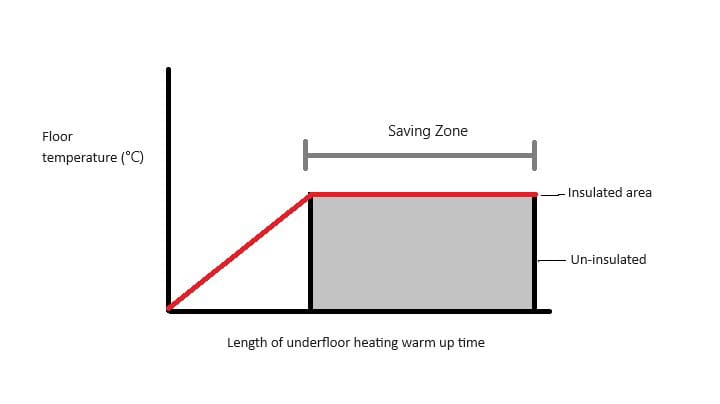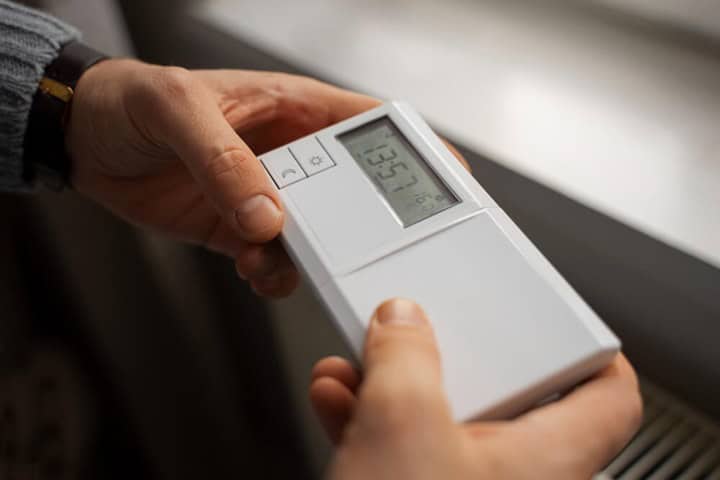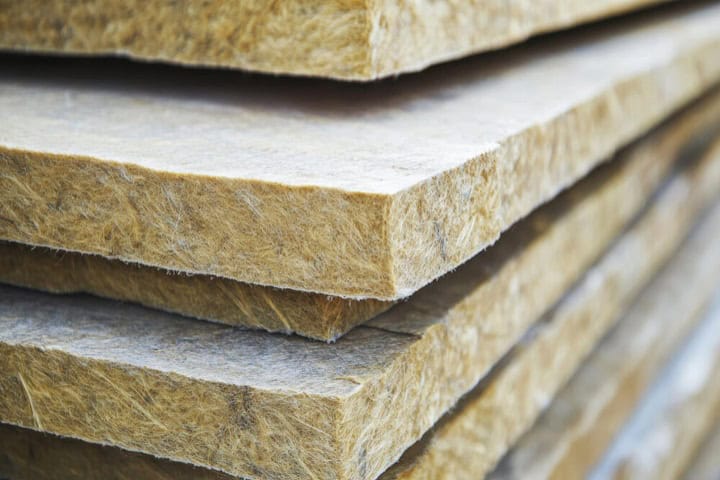Many homeowners want to know how to make the most of their heating system efficiently. Underfloor heating offers a sophisticated solution, but how do you maximise its benefits?
Homeowners are always looking for innovative ways to run their central heating systems at home efficiently. But did you know that underfloor heating is also classed as a central heating system too? This means that it is possible to use underfloor heating efficiently, but how? In this article, you will learn how to use underfloor heating efficiently, as we demonstrate installation and insulation tips, its pros and cons, and how various floor types can affect its performance.
Key points:
- Understand the basic operation and types of underfloor heating systems.
- Learn about compatibility with different floor coverings.
- Discover tips for energy efficiency and maintenance.
- Find out how insulation impacts the transmission of heat from underfloor heating.
How Efficient is Underfloor Heating?
Underfloor heating is not just a modern luxury; it’s a practical and efficient way to heat your home. But how efficient is underfloor heating, and what makes it a preferable choice for many homeowners?
Types of Underfloor Heating Systems
There are two types of underfloor heating systems – hydronic and electric. Both of these systems emit heat differently throughout the home. Knowing the difference between the two will help you to distinguish which is the most efficient, and therefore, best underfloor heating system.
- Water-based Systems: Often considered the most efficient way to run underfloor heating, water underfloor heating systems circulate hot water through pipes installed beneath the floor. This method can be integrated with renewable energy sources, such as solar panels or wind turbines, advancing its eco-friendliness. The best way to use underfloor heating like this is to install it during the construction phase of a home to minimise retrofitting complexities and costs.
- Electric Systems: Known for their simple installation, electric underfloor heating mats are a popular choice for renovation projects. They are less expensive upfront and can be installed by homeowners themselves. Although they may not match the efficiency of water-based systems at the point of use, they still provide a consistent and even heat that can reduce the overall energy consumption compared to traditional radiators.
How To Make Underfloor Heating More Efficient
There are several ways in which you can make your underfloor heating system operate more efficiently for your home. Again, this should be done during the installation stage to save you the troubles that common underfloor heating problems can bring.

What Factors Impact Efficiency
- Substrate and Installation: The efficiency of underfloor heating can be affected by the type of substrate—be it timber or concrete—and whether the property is detached or terraced. Timber substrates typically experience more heat loss than concrete, and detached homes may lose more heat at the edges compared to homes in a terrace.
- Output Levels: Selecting the correct output (measured in watts per square metre) is vital. Higher outputs are beneficial in areas that lose heat quickly, like conservatories, but can be overkill for smaller, well-insulated rooms. Tailoring the output to the specific room and its usage can significantly aid efficiency.
- Insulation: Proper insulation is crucial towards how your underfloor heating system will perform. It’s not just about having a well-insulated floor; walls and ceilings also play a crucial role. High-quality insulation reduces overall heat loss, making underfloor heating an even more viable and efficient option.
- Floor Finish: The type of flooring also influences the efficiency of underfloor heating. Materials like stone may take longer to heat up but will retain heat longer than engineered wood. The thickness of the floor material can also affect the system’s responsiveness and heat retention.
Temperature Control
The most efficient way to run underfloor heating involves maintaining a consistent temperature tailored to time-of-day needs.
In the morning, setting your thermostat to around 21 degrees Celsius provides a warm start to the day. Once everyone is out of the house, lowering the setting to between 18 and 16 degrees helps conserve energy while keeping the home comfortably warm.
During evenings, raising the temperature back to 21 degrees ensures a cosy environment for relaxation. Overnight, reducing the temperature to about 14 degrees saves energy without compromising comfort.
This method of “setback temperature” control not only reduces the strain on your heating system but also ensures it operates more efficiently by maintaining a steady base temperature rather than heating from cold each time, which can be energy-intensive, and still remains in line with what temperature your home should be.
Setting Up Smart Temperature Controls

To run your underfloor heating system more efficiently using temperature controls, consider the following methods:
- Programmable Thermostats: Use programmable thermostats to set ‘comfort’ and ‘setback’ temperatures. For example, setting the thermostat to warm the house to 22°C for morning routines and lowering it to 18°C during the day when the house is unoccupied can significantly reduce energy usage.
- Night and Day Settings: Implement a night setback where the temperature is further reduced, say to 18°C, which is comfortable enough to sleep and cost-effective. The system can then be programmed to warm up before the household wakes up, ensuring a warm start to the day without excessive energy use.
How Modern Technology on Impact Efficiency
Advancements in technology have significantly increased the efficiency of underfloor heating systems. Modern systems are designed to convert nearly every penny spent on energy into direct heating, reducing wastage.
With improvements in materials and design, such as thinner floor build-ups, underfloor heating now requires less energy to achieve the same level of warmth compared to older systems. This is particularly beneficial compared to traditional radiators, which underfloor heating can outperform in efficiency by 15-40%.
Tips for Maintaining Efficiency
Here are some practical ways in which you can maintain efficiency with your underfloor heating system:
- Regular Maintenance: Ensuring your underfloor heating system is regularly checked and maintained by professionals can prevent inefficiencies or faults that may cost more in the long run. Learn the differences between underfloor heating DIY and hiring a professional.
- Smart Thermostats: Invest in a programmable, smart thermostat, or otherwise app controlled thermostats. These heating controls can adjust the heating based on your schedule and even learn your preferences over time, making it easier to maintain an efficient, comfortable environment without manual adjustments. Technological advancements also make it possible to control underfloor heating from your phone.
- Consider Zone Heating: By setting up multi-zone heating, you can control which areas of your home are heated and when, which avoids the wastage of heating unoccupied spaces.
The Importance of Proper Insulation

A well-insulated home is crucial for maximising the efficiency of underfloor heating. The best installations often involve insulation boards and screeded floors, which can retain heat even when the heating system is off.
This level of insulation ensures that heat is not lost to the substrate below, thereby improving the overall efficiency of the system. In theory, a correctly designed and installed underfloor heating system, coupled with the correct insulation, can be the most effective and efficient heating solution available.
Are Insulation Boards Necessary?
Yes, insulation boards are essential for underfloor heating as they can prevent up to 50% of heat loss, instantly improving the system’s efficiency. These boards come in two main types:
- Uncoated Insulation Boards: Ideal for concrete and screed substrates, these boards are made from high-density extruded polystyrene and are commonly used with a flexible cement-based tile adhesive to improve thermal insulation and reduce heat loss.
- Coated Insulation Boards: Best suited for timber substrates, these boards feature a high-density extruded polystyrene core with a fibreglass reinforced cement coating on both sides. This not only adds strength and rigidity but also enhances the thermal insulation properties, making them perfect for areas with moisture, like bathrooms and wet rooms.
Other relevant articles to try:
Based on what we have discussed, here are some other relevant articles to explore to better aid your knowledge on how to run an efficient underfloor heating system:
- Best flooring for underfloor heating
- Underfloor soundproofing and insulation
- How to turn off underfloor heating
- What temperature should underfloor heating be set at
Efficient Underfloor Heating Made Simple
In conclusion, efficient underfloor heating hinges on proper installation, strategic temperature control, and regular maintenance. By choosing the right insulation, utilising programmable thermostats, and maintaining a consistent heating schedule, homeowners can improve the performance and cost-effectiveness of their central heating systems.
At Underfloor Heating Trade Supplies, we provide all the necessary components to ensure your heating system is as efficient as possible, making it an ideal choice for sustainable and comfortable home heating solutions.
Check out this helpful guide on how you can heat a home efficiently in the UK.
FAQs
What is the most economical way to set underfloor heating?
The most economical way to set underfloor heating is to use a programmable thermostat to maintain steady “comfort” temperatures when you are home and “setback” temperatures when you are away or asleep, reducing the overall energy usage without sacrificing comfort.
Is it cheaper to leave underfloor heating on all the time?
Yes, it is often cheaper to leave underfloor heating on continuously at a lower temperature rather than turning it on and off. This method avoids the energy peaks of reheating the space from cold and maintains a consistent temperature, which can be more energy-efficient.
How many hours a day should underfloor heating be on?
Underfloor heating can be left on 24 hours a day at a lower temperature setting, especially during colder months. Adjusting the thermostat to slightly higher temperatures only when needed can ensure efficiency and comfort.
How to effectively use underfloor heating?
To use underfloor heating effectively, install adequate insulation, use a programmable thermostat to create heating zones and schedule heating times, and maintain a consistent but moderate temperature to reduce fluctuations and energy waste.
Sources
Tremain, D., (2024) How to heat a home efficiently. Compare the Market. [online] Available at: https://www.comparethemarket.com/energy/content/heating-house-efficiently/ [accessed 28/08/24]
